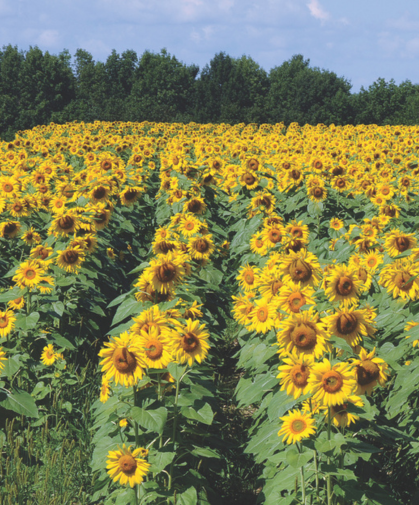Sunflowers (Cover Crop) - Key Growing Information

Uses: As a cover crop, sunflowers produce abundant biomass, break up soil compaction, scavenge nutrients, and serve as a pollen and nectar source for beneficial insects. Also suited for edible seeds and birdseed.
Culture: Sunflowers are a warm-season crop, so wait to sow until soil is at least 60°F, though 70–85°F is optimal. Sow 1–1½ inches deep using a seed drill or garden seeder or broadcast and lightly harrow in.
Seeding Rate: ½–1 lb./1,000 sq.ft.; 15–40 lb./acre.
Light/Soil Requirements: Sunflowers prefer full sun and well-drained soils with a pH between 5.5–7.8.
Height: 7'
Harvest: For bird and/or edible seed, cut heads after petals drop when seeds are mature. Thresh seeds by rubbing heads over frame-mounted ½" hardware cloth over a box. Spread to dry.
Termination: Sunflowers can be successfully terminated by mowing at flowering or by frost. If winterkilled, standing sunflowers can provide winter food for birds and the stems can serve as winter nesting sites for pollinators. Residue management can be challenging, however, and can require aggressive tillage to bury stalks and root balls. Winterkilled sunflowers should be chopped as finely as possible prior to incorporation. Not recommended for planting prior to crops requiring a fine seed bed. Volunteer sunflowers can result the following season if the crop is allowed to set seed.

